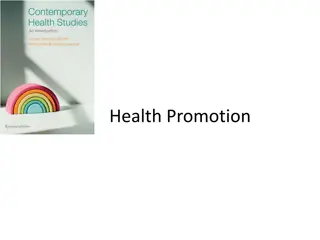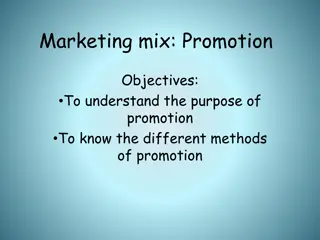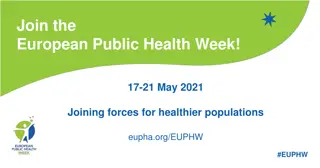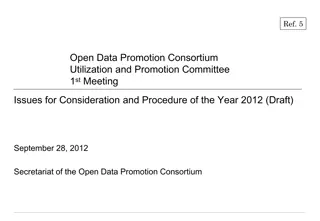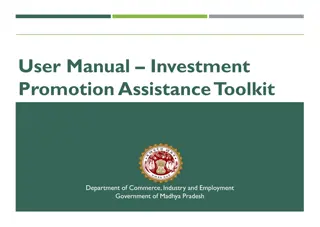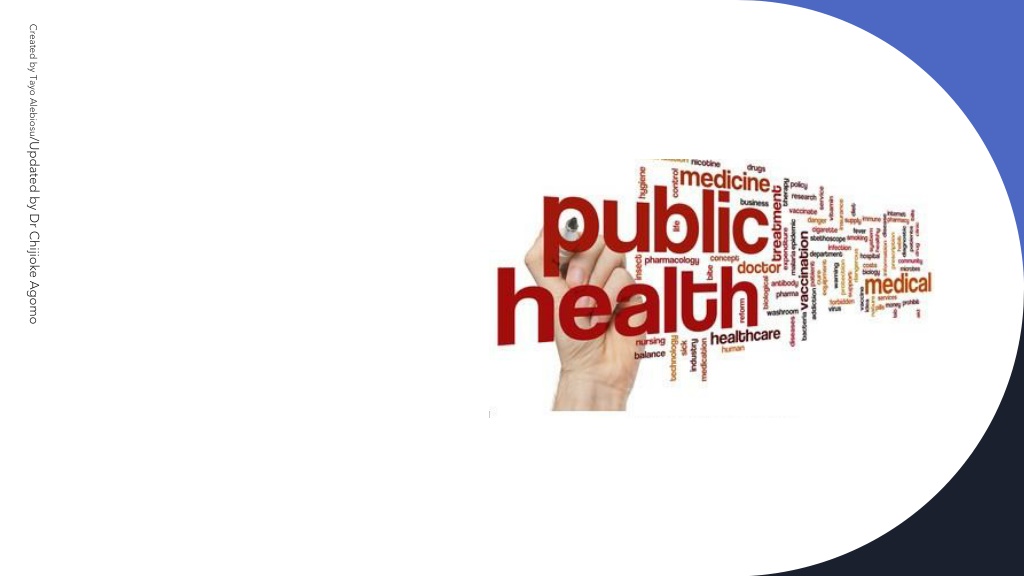
Understanding Health Promotion Theories and Approaches
Explore the definitions and historical development of health promotion theories and practices, evaluate different approaches to health promotion, and learn about the factors affecting health and promoting well-being. Discover the WHO's definition of health and the shift in focus towards enabling individuals to improve their health.
Download Presentation

Please find below an Image/Link to download the presentation.
The content on the website is provided AS IS for your information and personal use only. It may not be sold, licensed, or shared on other websites without obtaining consent from the author. If you encounter any issues during the download, it is possible that the publisher has removed the file from their server.
You are allowed to download the files provided on this website for personal or commercial use, subject to the condition that they are used lawfully. All files are the property of their respective owners.
The content on the website is provided AS IS for your information and personal use only. It may not be sold, licensed, or shared on other websites without obtaining consent from the author.
E N D
Presentation Transcript
Public Health LO4-Week 1-Slide 2 Health Promotion
Aim; Evaluates theories and approaches of health promotions relevant to health issues within professional roles or work placement. Learning Outcomes; Explore the definition of health Review the historical development of health promotion theory and practice Evaluate different approaches to health promotion Created by Tayo Alebiosu
The World Health Organization (WHO) defines health as 'a state of complete physical, mental and social wellbeing and not merely the absence of disease or infirmity'. WHO Constitution Health is a state of physical, mental and social well-being in which disease and infirmity are absent. A variety of definitions have been used for different purposes over time.
1948 WHO definition of health A state of complete physical, mental and social well- being and not merely the absence of disease or infirmity WHO Constitution
Factors Affecting Health: Individual Choices: Engaging in high-risk behaviours. Structural Causes: Societal arrangements affecting access to healthcare. Beyond Control: Genetic disorders. Promoting Health: Encouraging Healthful Activities: Regular physical exercise. Reducing Unhealthful Activities: Avoiding smoking and excessive stress.
Health promotion In 1984, the WHO defined health promotion as the process of enabling people to take control over maintaining and improving their health. Shift in Focus: The issuance of the health promotion definition shifted attention from lifestyle impacts on health to structural factors in society that support health. According to the World Health Organization (1986), "health promotion is the process of enabling people to increase control over, and to improve their own health." Theories and Models: To achieve the desired outcomes of health promotion, various theories and models for understanding and altering health behaviours have been developed and utilised.
Health promotion is the process of enabling people to increase control over, and to improve, their health. Broader Focus: Health promotion moves beyond individual behaviour, encompassing a wide range of social and environmental interventions. Public Health Improvement: The process aims to improve and protect the health of individuals, populations, and communities. Enabling Control: Health promotion involves enabling people to take control of and improve their own health. Methods: This is achieved through building healthy public policies, creating supportive environments, and strengthening community action and personal skills.
Health promotion involves public policy that addresses health determinants such as income, housing, food security, employment, and quality working conditions. More recent work has used the term Health in All Policies to refer to the actions that incorporate health into all public policies. Health promotion is aligned with health equity and can be a focus of non-governmental organisations (NGOs) dedicated to social justice or human rights. Created by Tayo Alebiosu Health literacy can be developed in schools, while aspects of health promotion such as breastfeeding promotion can depend on laws and rules of public spaces.
How do we promote our physical, mental, emotional, social, and psychological wellbeing? We promote through----- Health Promotion programs
Understanding Health Promotion - A Short Introduction https://youtu.be/y9THQTEqMa U Idrentify health promotion strategies from the video clip What is Health Promotion https://youtu.be/60UXj6XjZMM
Introduction A brief history of Health Promotion Each period and accomplishment has helped delineate the depth and breadth of health promotion practice. Although the latter part of the 20th century is typically viewed as being most critical in shaping the nature of health promotion practice.
First Publication: The 1974 Lalonde report from the Government of Canada was the first publication on health promotion. It aimed at informing, influencing, and assisting individuals and organizations to accept more responsibility and be more active in matters affecting mental and physical health. Another Publication: The 1979 Healthy People report by the U.S. Surgeon General noted that health promotion seeks the development of community and individual measures to help people develop lifestyles that maintain and enhance well-being.
First International Conference First International Conference: Held in Ottawa in 1986, the conference responded to growing expectations for a new public health movement globally. It initiated actions among international organizations, national governments, and local communities to achieve "Health For All" by the year 2000 and beyond. Ottawa Charter Strategies Ottawa Charter Strategies: The basic strategies identified were: Advocate Advocate: Boost factors encouraging health. Enable Enable: Allow all people to achieve health equity. Mediate Mediate: Promote collaboration across all sectors.
WHO Global Health Promotion Conferences WHO Global Health Promotion Conferences: These conferences have established and developed global principles and action areas for health promotion. 9th Global Conference (Shanghai 2016) 9th Global Conference (Shanghai 2016): Titled "Promoting health in the Sustainable Development Goals: Health for all and all for health," this conference highlighted the critical links between promoting health and the 2030 Agenda for Sustainable Development. Shanghai Declaration Shanghai Declaration: Calls for bold political interventions to accelerate country action on the Sustainable Development Goals (SDGs). Provides a framework for governments to utilise the transformational potential of health promotion.
Formation of the Royal Society for Public Health Formation of the Royal Society for Public Health: In October 2008, the Royal Society for Public Health was formed by merging the Royal Society for the Promotion of Health (RSH) and the Royal Institute of Public Health (RIPH). Publication in July 2005 Publication in July 2005: The Department of Health and Welsh Assembly Government published "Shaping the Future of Public Health: Promoting Health in the NHS". Collaboration in 2006 Collaboration in 2006: The Royal Society for Public Health and three national public health bodies agreed to work together, in partnership with other organisations, to take forward the report's recommendations following discussions with Department of Health and Welsh Assembly Government officials.
Examples of effective health promotion activities for child and family health Promoting breastfeeding. Promoting child and family nutrition. Sudden Infant Death Syndrome (SIDS) prevention and education Injury prevention Promoting physical activity. Smoking cessation programs such as 'quit' activities and 'brief interventions'
Aims of health promotion Health promotion focuses on achieving equity in health. Health promotion action aims at reducing differences in current health status and ensuring equal opportunities and resources to enable all people to achieve their fullest health potential. Why is health promotion important? Health promotion improves the health status of individuals, families, communities, states, and the nation. Health promotion enhances the quality of life for all people. Health promotion reduces premature deaths.
Health promotion Aims cont. Health promotion and disease prevention can be achieved through planned activities and programs that are designed to improve population health outcomes. Health promotion and disease prevention programs can empower individuals to make healthier choices and reduce their risk of disease and disability. At the population level, they can eliminate health disparities, improve quality of life, and improve the availability of healthcare and related services. Health promotion programs can be implemented in varied settings, including rural communities. Residents can benefit from health promotion and disease prevention programs scaled for use in communities, which have unique implementation considerations.
Health Promotion and Disease Prevention Focus: Health promotion and disease prevention programs aim to keep people healthy. Goal: Engage and empower individuals and communities to adopt healthy behaviors and make changes that reduce the risk of developing chronic diseases and other morbidities. World Health Organization, defined health promotion: Enables people to increase control over their own health. It covers a wide range of social and environmental interventions that are designed to benefit and protect individual people s health and quality of life by addressing and preventing the root causes of ill health, not just focusing on treatment and cure .
Disease prevention & health promotion Social Determinants of Health: Health promotion and disease prevention programs often address social determinants of health, which are the economic, social, cultural, and political conditions in which people are born, grow, and live that affect health status. Modifiable Risk Behaviours: These include behaviours like tobacco use, poor eating habits, and lack of physical activity, which contribute to the development of chronic diseases. Sedentary Lifestyle: This refers to a lifestyle with a lot of sitting and lying down, with very little to no exercise. Sedentary activities are increasing in the United States and around the world.
Created by Tayo Alebiosu Disease prevention & health promotion Disease prevention & health promotion Disease prevention differs from health promotion because it focuses on specific efforts aimed at reducing the development and severity of chronic diseases and other morbidities. Wellness is related to health promotion and disease prevention. Wellness is described as the attitudes and active decisions made by an individual that contribute to positive health behaviours and outcomes
Typical activities for health promotion, disease prevention, and wellness programs include: Communication Communication: Raising awareness about healthy behaviours through public service announcements, health fairs, mass media campaigns, and newsletters. Education Education: Empowering behaviour change and actions through increased knowledge with strategies like courses, trainings, and support groups. Policy, Systems, and Environment Policy, Systems, and Environment: Making systematic changes through improved laws, rules, regulations, functional organisational components, and economic, social, or physical environments to encourage and enable healthy choices.





